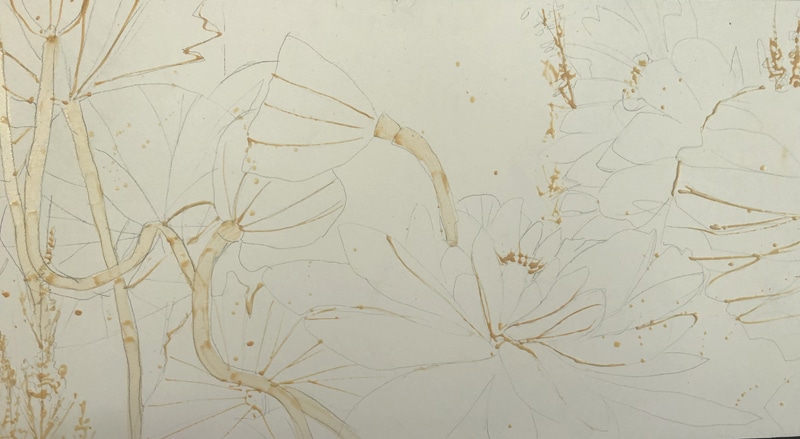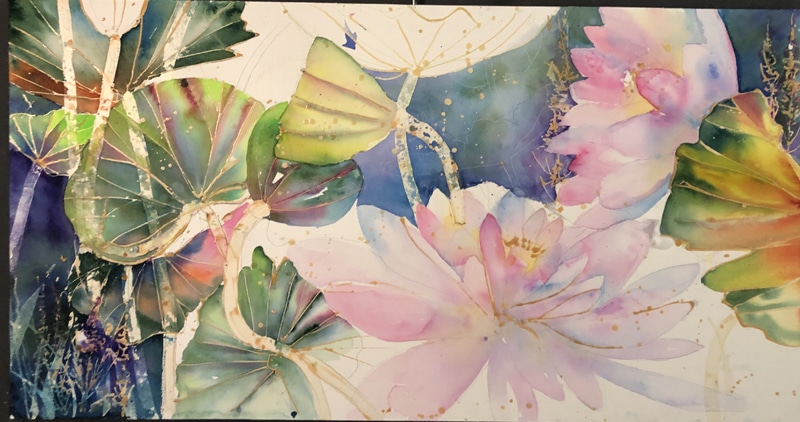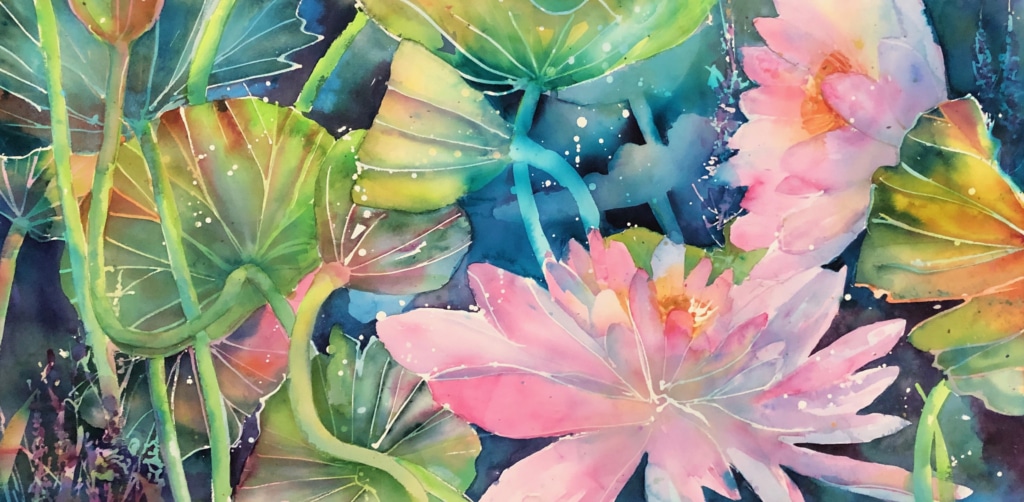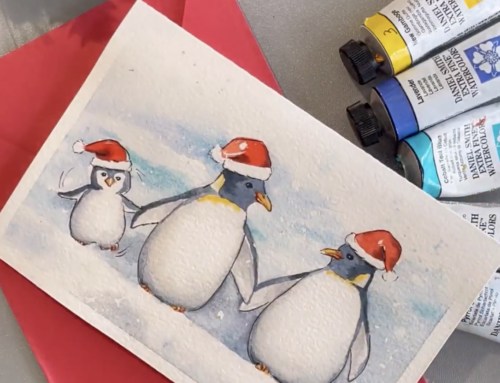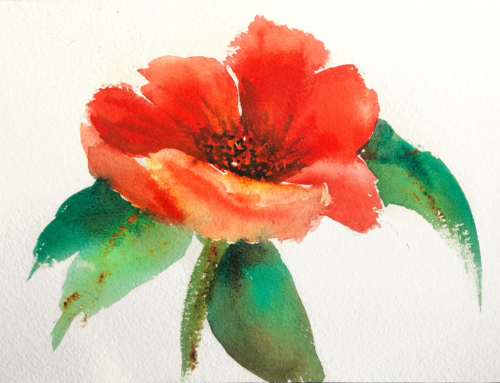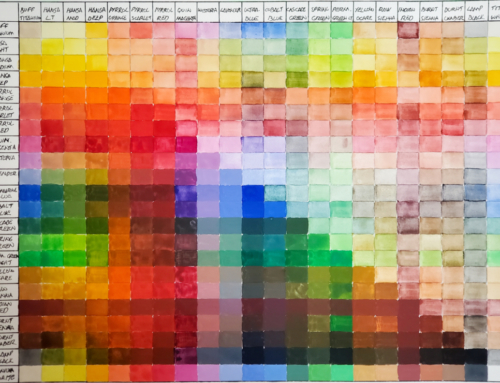Share:
During a recent visit to a local aquatic garden, I was inspired to create a lotus painting using my watercolor batik technique. Traditional batik uses a wax-resist technique on cloth. However through experimentation, I discovered that this approach lent itself to my personal esthetic and painting style.
In my watercolor batik approach, I replace traditional cloth with watercolor paper, I use a masking agent like DANIEL SMITH Masking Fluid, and I substitute the dyes with watercolors. Transparent washes of color, with additional layers of masking agent applied between washes, create vibrant batik effects. The finished pieces can be as varied as your imagination will allow, from photo realism to nonrepresentational paintings.
I often combine images in photo editing software to create my desired reference image (above). This process allows me to arrange and rearrange individual elements of the scene to achieve unity and a strong composition.
This is the first application of masking in the stems, the petal outlines and some splatter texture. It is critical to establish a pattern or rhythm to your work, even at this early stage. These initial areas of masking are almost always visible in the finished painting.
When the masking is completely dry , I proceed with my first application of paint. I use a wet-into-wet approach, with lots and lots of water. The paints mix and mingle on the watercolor paper, rather than being mixed on my palette.
I wait for the paint to dry before adding a second layer of masking. The second application preserves areas of color rather than the white of the paper. I repeat the process of new layers of masking and additional washes of color. My finished paintings often have four or five applications of masking and an equal number of glazed layers. This “back and forth” of applying more masking and more paint is what gives my work its distinctive look.
Using a rubber cement pick-up, I remove all the layers of masking. Don’t be shocked by the stark white of the revealed paper. Remember, you now have the option of filling in those white places with any appropriate color or leaving it white. Depending on what stage of the painting the masking was applied determines what color will be revealed when the masking is removed.
This technique achieves an unsurpassed richness and depth of color. My background in botany and biology often leads me to subjects of nature. However, this technique works equally well with still life and landscapes. I am sure you will find experimenting with this new approach exciting and rewarding.




